Tag: environmental justice
OHC Exhibit “Voices for the Environment” Curator Q&A
The Oral History Center is excited to announce the opening of Voices for the Environment: A Century of Bay Area Activism, a Bancroft Library Gallery exhibition that was curated by Todd Holmes, Roger Eardley-Pryor, and Paul Burnett. Voices for the Environment traces the evolution of environmentalism in the San Francisco Bay Area across the twentieth century. In three sections, it highlights how Bay Area activists have long been on the front lines of environmental change—from efforts to preserve natural spaces in the wake of the 1906 San Francisco earthquake and fire, to the midcentury fight for state regulations to protect San Francisco Bay shoreline, to more recent demands for environmental justice to address the disproportionate burden of pollution that sickened communities of color around the Bay.
We sat down with Eardley-Pryor and Holmes to ask them about their experience curating the exhibit, bringing the OHC’s interviews to life in The Bancroft Library’s gallery, and what they learned along the way.
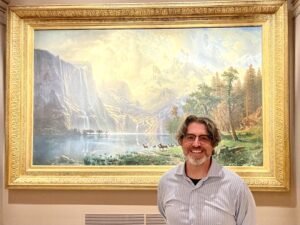
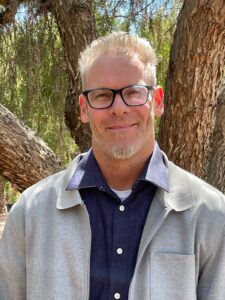
Q: When you were originally thinking about this exhibit, which spans a century of Bay Area environmental activism, what topics, themes, or events were important for you to include?
TH: As historians, both Roger and I approached the exhibit through the lens of change over time, essentially asking the question, “How did what we’ve come to recognize as environmentalism evolve and change in the Bay Area over the twentieth century?” Combining our knowledge of both the oral history collection – which was to stand at the heart of the exhibit – and the environmental history of California, we selected the three stories we wanted to highlight fairly quickly.
First, we wanted to tell the story of Hetch Hetchy, the valley in Yosemite National Park that was dammed for San Francisco’s water system. This is a seminal event used in history classes across the nation to highlight the battle between two schools of environmentalism, preservationists like the Sierra Club’s John Muir, and conservationists like Gifford Pinchot of the U.S. Forest Service in the first part of the twentieth century. For the exhibit, we sought to use the Hetch Hetchy story to introduce visitors to preservation as the first form of environmentalism that took root in the Bay Area.
Second, we wanted to tell the story of Save The Bay, the movement initiated by three women from Berkeley to halt bay fill. Ultimately, that movement led to the creation of the San Francisco Bay Conservation and Development Commission (BCDC), a state government agency to regulate development on the bay. Here we wanted to highlight how environmental concerns became embedded within the fold of government by the mid-century. BCDC stands as the first environmental agency in the United States, providing a precedent for other regulatory agencies on the state and federal level in the years that followed, such as the California Coastal Commission. Moreover, BCDC also operated within a framework that sought to balance environmental protection with economic development.
Third, we wanted to tell the story of environmental justice, a movement in the last part of the twentieth century that sought to put the health of people – particularly communities of color – within the environmental agenda. While environmental justice is fairly common today in discussions of environmental policy, the story of how it developed is not well known, and the Bay Area was one of the central places in the nation from which the movement took root.
REP: Todd and I worked to ensure that, in this exhibit, environmental activists could speak for themselves, and that visitors to the exhibit could actually hear the voices of activists recorded in their oral history interviews. The Audio Spotlight technology that allow people to hear interview clips in the gallery, the three videos Todd created with rare film footage and photographs, and the three podcast episodes we made with Sasha Khokha of KQED all make this exhibit something special that has never been done before in The Bancroft Library Gallery. For me, the people-power of communities of color demanding environmental justice, and the longtime leadership of women working for environmental protection were really important themes to include. Often, environmental history is told through the actions of men like John Muir, who does deserve credit for his early advocacy to protect nature through its preservation. The legacy of Muir and the ongoing work of the Sierra Club are important, and they remain so today. But Todd and I wanted to tell a deeper and broader history of Bay Area environmentalism, which shows how women and people of color have been central to the expansion and the evolution of environmental action over the course of the 20th century. I hope the stories shared in this exhibit help contextualize and make current environmental issues more meaningful—be it present-day preservation issues in 30 x ’30 campaigns, or conflicts over coastal regulations amid sea-level rise, or ongoing challenges to empower people of color in mainstream environmental movements.
Q: Did the themes you wanted to highlight change during the course of your research?
REP: We worked hard for over a year to bring this exhibit to life and to my memory, we agreed fairly early on about the three main narratives featured in the exhibit—the preservation of nature, reconciling environment and development, and environmental justice for communities of color. Over the course of our research, we changed the details of which particular oral history segment we might include here or there, or which image or document would best compliment the oral histories featured in each section of the exhibit. But as I recall, the exhibit’s main story arc remained steady from early in our curation process.
TH: Surprisingly, there was no change in the main topics / stories we wanted to highlight in the three sections of the exhibit. What our research did do was help expand on the themes within each to add more depth and nuance around community activism. For instance, in the first section we not only focused on the story of Hetch Hetchy, but connected it to activism around Save the Redwoods, which in turn highlighted the vital – yet often overlooked – role of women in the early preservation movement. Men like John Muir may have become the figureheads of environmentalism, and voted for such policies in government, but it was women who provided the grassroots momentum that put environmental concerns on the table. The same could be said for the third section on environmental justice. Our research uncovered a lot of different groups and experiences in the Bay Area grappling with environmental racism, from toxic sites in Richmond and what became known as the Silicon Valley, to debates with white environmental groups about even using the term “racism.” So in all, our research gave us a number of themes to spotlight and weave together throughout the exhibit
Q: The exhibit begins with the 1906 earthquake. Why did you decide to start there?
TH: This is another example of how research expanded the themes and stories of the three main topics we sought to feature in the exhibit. We wanted to highlight the story of Hetch Hetchy in the first section. Our research of the Hetch Hetchy battle forced us to upstream to the root cause – the 1906 earthquake and fire that destroyed 80 percent of San Francisco. At the time, San Francisco stood as the largest and richest city west of Chicago. In the wake of the disaster, the rebuilding effort posed a tremendous threat to the natural resources of the state. Ancient redwood forests throughout the Bay Area and along California’s north and central coast were targeted for timber, just as the Hetch Hetchy Valley was eyed for water and hydro-electric power. Thus, these rebuilding efforts proved the impetus of the early activism to preserve California’s environment.
REP: The drowning of Hetch Hetchy Valley—despite it being located within Yosemite National Park—is such a powerful and classic story in environmental history, and it occurred because the 1906 earthquake and fire destroyed San Francisco. Amazingly, Todd found several oral histories in our collection with survivors of the earthquake and fire who recall their experiences of it when they were children. In The Bancroft Library, Todd also found historic film footage, recently digitized, that shows San Francisco still aflame just after the earthquake. Putting those oral histories together with this footage make for a captivating start to the exhibit.
But what I didn’t realize until working on the exhibit was how the preservation of redwoods was also connected to how the earthquake and fire destroyed San Francisco. After the fire, lumber companies promoted California’s fire-resistant coastal redwoods as a means to rebuild the devastated city. In turn, environmentalists redoubled their efforts to preserve special groves of those ancient redwood trees. It suddenly made sense to me how Muir Woods National Monument was established in Marin County just a few years after the 1906 earthquake. Additionally, we wanted our exhibit on Bay Area environmentalism to highlight the Sierra Club, which was founded in San Francisco in 1892 and has since become one of the most influential environmental organizations in the nation. The Oral History Center has conducted oral histories with Sierra Club leaders since the early 1970s, and several activists, like William Colby, Ansel Adams, and David Brower, discussed in their oral histories how the fate of Hetch Hetchy continues to inform ongoing preservation efforts. So, in many ways, the 1906 San Francisco earthquake and fire helped ignite the spirit of preservation that still informs environmental activism, both in the Bay Area and across much of North America.
Q: What role does oral history play in the exhibit?
REP: Oral history is the beating heart that gives life to this exhibit! We scoured several scores of Oral History Center transcripts for captivating stories about Bay Area environmental activism. David Dunham helped us obtain digitized versions of those oral history recordings. We then used The Bancroft’s traditional paper, photograph, and film collections to complement the oral history narratives that we featured in the exhibit. Christine Hult-Lewis and Lorna Kirwan helped us explore several of those archival collections, and Theresa Salazar pointed us to the excellent Urban Habitat Program Records, 1970-2001, which are displayed in our exhibit. Ultimately, the exhibit offers a multi-sensory experience where visitors can engage audio recordings, film footage, oil paintings, photographs, pamphlets, posters, descriptive text, and they can even hold the hardbound oral history transcripts featured in the exhibit. But certainly, oral history is the centerpiece of the exhibit.
TH: In short, everything! This is the first exhibit curated by the Oral History Center, and the first in-depth effort to showcase both the oral history and other archival collections of The Bancroft Library. Each section features oral histories about the main topic in three ways. Edited oral history segments are played in each section through an Audio Spotlight speaker, and accompanied with a video that shows captions as well as related photographs and archival footage. The oral histories are also available through a three-episode podcast, narrated by Sasha Khokha from KQED San Francisco. The podcast episodes, available online and in the gallery by scanning a QR Code, offer a deeper dive into the stories of each section. Lastly, we used oral histories quotes in the labels of the exhibit material to add further detail and context.
Q: The 1960s and ’70s were two very productive decades in terms of environmental activism. Did the oral histories that you encountered from the OHC’s collection make you think differently about this period, or illuminate something new?
TH: In my view, the oral histories we used in the exhibit helped place the activism of the 1960s and 1970s in better context. For instance, we often think of the “environmental movement” as arising around the late 1960s / early 1970s. Yet, this view completely overlooks the activism of men and women around preservation in the first couple decades of the twentieth century. It also overlooks the vital work of Sierra Club executive director David Brower, whose activism throughout the 1950s and 1960s staved off numerous developments and led to the establishment of ten new national parks. In many respects, I think the oral histories featured in this exhibit pushed me to think about a “long environmental movement” that gained traction in the halls of government during the 1960s and 1970s. I think the exhibit also highlights how the Civil Rights Movement and environmental movement came to intertwine by the end of the decade to form environmental justice, which was an area I felt fortunate to learn more about through this project.
REP: Actually, rather than the 1960s and 1970s, the oral histories we included in the exhibit helped me realize the importance of the 1980s and 90s to the expansion and evolution of environmentalism. Without a doubt, activity surrounding Earth Day in 1970 was a key inflection point in environmental history, inspiring new environmental laws and a new generation of environmental activists. But the oral histories in our exhibit tell how Bay Area activists laid the early groundwork at least since the early 20th century for later environmental regulations, and how activists in the final decades of the 20th century worked to include all people in environmental protections, especially communities of color who suffered the most from industrial pollution.
Q: You put together additional material, like a podcast and class workbook, to accompany the exhibit. How do you hope people will use these materials?
TH: For the past couple years, the Oral History Center has been working on ways to get our collection into the K-12 education space. We developed additional materials, such as the class workbook and podcast, to serve as educational resources for K-12 classrooms, as well as undergraduate courses.
REP: The podcasts and educational workbook can be used anywhere—while visiting and experiencing the exhibit in person, or at home or in classrooms. We hope people use those additional materials long after the exhibit closes in November 2024!
Q: What do you hope that people take away from the exhibit?
REP: I hope exhibit visitors sense the importance, power, and potential of oral history. I hope they see how the Oral History Center’s work to record the lived experiences and reflections of people through oral history creates invaluable records that helps us better understand where we’ve come from and helps us make sense of our experiences today. I also hope visitors realize the importance of Bay Area activists in shaping the evolution of environmentalism over time. And I hope visitors hear how the actions of Bay Area people in the past, as told in their own words, helped define our experiences in the Bay Area today. Given today’s grave threats to our environment and to our democracy, I hope visitors appreciate how environmental activism remains an ongoing process that is shaped and renewed by average people like them who engage in civic activism. I also hope the oral histories featured in this exhibit—and the many, many more that are preserved in the Oral History Center collection—help inspire people to shape and renew environmentalism today and in the future.
TH: I hope visitors come away from the exhibit with a better understanding of how environmentalism evolved and changed over the century, and that it has a long history in the Bay Area. Moreover, I hope the oral histories featured in the exhibit highlight the change brought on by everyday people. It was the activism of men and women that led to protected redwood forests and the creation of state and national parks. It was the unwavering dedication of three women from Berkeley that stopped fill projects in San Francisco Bay and led to the nation’s first government-run environmental agency. And it was the collective action of communities of color that put justice within the environmental agenda, and on the dockets of policymakers. Ultimately, I hope visitors, young and old, walk away with the idea that change comes about through everyday people.

Enlisting Humanity by Uplifting the Voices Who Have Gone Unheard: Undergraduate Research in Oral History
Enlisting Humanity by Uplifting the Voices Who Have Gone Unheard
By Emily Nodal
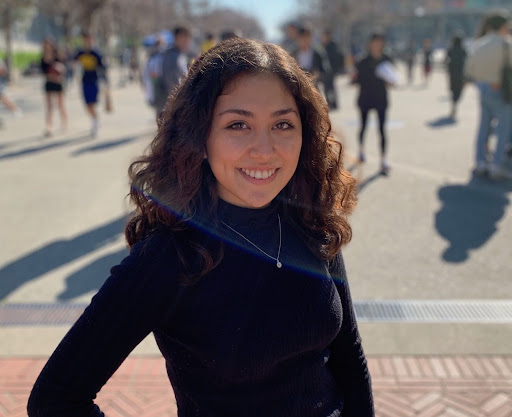
Emily Nodal, UC Berkeley Class of 2022, is a Society and Environment major in the Rausser College of Natural Resources with an emphasis on justice and sustainability while minoring in public policy. In Spring 2021, Emily worked with historian Roger Eardley-Pryor in the Oral History Center of The Bancroft Library and earned academic credits as part of Berkeley’s Undergraduate Research Apprentice Program (URAP). URAP provides opportunities for undergraduates to work closely with Berkeley scholars on research projects for which Berkeley is world-renowned. For her URAP project, Emily used oral history materials to create the video embedded below on “Environmental Justice, Systemic Racism, and Democracy.” She also suggested high school curriculum materials to accompany the video. Below, Emily shares the personal nature of her research.
For my URAP project during the Spring 2021 semester, I had the privilege of developing a high school curriculum on environmental justice utilizing the narratives and perspectives of those interviewed by the Oral History Center. This project was very personal to me because environmental injustice has become increasingly prevalent in my own community.
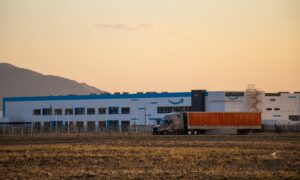
I grew up in the Inland Empire, an industrialized region in Southern California inhabited predominantly by low-income communities of color, where consistently poor air quality and smoggy days felt like the norm to my peers and me. In recent years, the rapid development of Amazon warehouses and corresponding traffic congestion has exacerbated the environmental vulnerability of my community’s exposure to environmental toxins and their subsequent health hazards.
Efforts in 2020 to expedite delivery services for the online shipping boom wrought by the coronavirus pandemic resulted in dramatic expansion of Amazon’s shipping facilities while further enriching the multi-billion dollar corporation. Amazon’s development efforts have heightened shipping efficiencies and brought new jobs to these predominantly low-income communities of color, while also disproportionately burdening the already polluted region with negative amenities and toxic hazards. According to the Inland Empire-based “People’s Collective for Environmental Justice,” the more than 3,000 warehouses in the Inland Empire are all sited in the highest percentile for toxic emissions in the state and the populations living within a half-mile radius of the warehouses are 85% people of color. As someone who grappled with the realities of environmental inequity directly, I welcomed the chance to expand my environmental justice research into an effective, oral history-based high school curriculum.
While exploring the array of interviews in the Sierra Club Oral History Project archive, I felt drawn to the narrative of Aaron Mair, a leader in the environmental justice movement and a former president of the Sierra Club. As a prominent Sierra Club leader from the EJ (environmental justice) movement and the first black president of the historically white environmental organization, Mair vividly illustrated how we, as environmental activists, must understand our environmental well-being as linked inextricably to the social, racial, and economic well-being of all others. Mair’s oral history became the basis for the educational video I created.
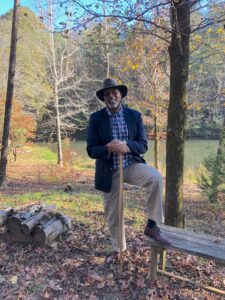
The ability of Mair and his family to endure the burdens of generational racism while at the same time upholding a connection to the natural world resonated with me and my own family’s experiences. Unlike the predominantly white leaders in the Sierra Club, many of whom began their activism focused on land and wildlife preservation, Mair’s lived experiences enabled him to see the cruciality of equitably uplifting all human and non-human stakeholders in conversations around environmental protection. He explained how his journey into the mainstream environmental movement came from his “family’s sense of home-place and a civil rights struggle, a migration struggle and pressure, dealing with the pressures of racism, while at the same time maintaining human dignity, but also maintaining a connection with their love of the natural beauty and wonders.”
Although I grew up in a low-income household, my family also valued the outdoors and took me camping in nature, which created my deep connection to and reverence for the natural world. However, I found my own experiences vastly different from many of my school peers from similar backgrounds. Environmental scholars like Carolyn Finney and Lauret Savoy have explored why many black and brown kids, from a young age, come to believe that nature and environmentalism isn’t for us. For too many of us, natural places and spaces are financially and even culturally inaccessible.
My engagement with Mair’s oral history narrative, coupled with my own experiences, reinforced how that racial exclusion emerged out of environmentalism’s flawed beginnings. Like many other movements in United States history, campaigns and institutions for wilderness preservation, land conservation, and modern environmentalism have been historically white-dominated. Mair examined this harmful past by reflecting upon his own organization and its founders, including the notoriously racist early UC Berkeley professor Joseph LeConte. As Mair explained in his oral history, LeConte “believed that African-Americans and Native Americans were inferior and separate and distinct races. He believed in his theory of life, which is that whites had a natural order and a higher chain of evolution over all things. He preached a theory of dominion over all things as opposed to stewardship of all things.” The problematic ideologies of early environmental advocates like Joseph LeConte permeated into the early environmental movement’s limited range of diversity and exclusionary land management practices. As described by Mair “it was them imposing upon [the land] their white will.”
In his oral history, Mair also explained how the environmental movement’s history continues to plague 21st century environmentalism in fundamental ways. Mair noted how “othering” marginalized groups historically has created contemporary environmental crises, as exclusion from environmental spaces has prevented those groups from becoming valid stakeholders in land-use decision making. Throughout most of its history, American environmentalism detrimentally established a dichotomy between humanity and nature, therefore requiring all humans not seen as “proper” stewards to be excluded. Mair critiqued this shortcoming in traditional environmental organizations, including in the Sierra Club, as advocating for the exclusion of humanity from nature in order to “save” it.
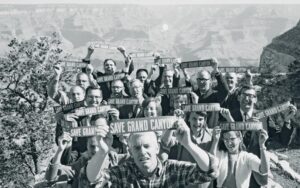
As Mair explained: “In the ‘saves,’ we create environmental organizations, and we become part of these clubs. And we think that the best way to protect land and nature is at the exclusion of humanity rather than the inclusion of humanity. It’s like building a fine Swiss watch and leaving out a master gear. And so, the ‘save’ organizations and their notion of preservation is missing a critical element, which is humanity, and humanity as a steward within that relationship. We should not be outside of it. Integral to the protection is our harmony with it… To me, that is like the story of the Yosemite Valley, how the First Nations were cleared out of the Yosemite Valley to protect it, even though they lived there for thousands of years… When humanity is relegated to being viewed as dirty or polluted in the eyes of the environment by other men, we lose something. That is indeed a crisis.”
The curriculum I created for this URAP project focused on environmental justice because if people of color remain socially, culturally, and economically disabled from accessing environmental spaces, then we will never be able to meaningfully contribute our widely diverse perspectives, experiences, knowledge, and solutions to the world’s escalating crises of climate change. Again, Aaron Mair articulated the need to expand and democratize marginalized communities’ access to environmental activism by his re-framing of the Sierra Club’s core mission to “enlist humanity.” Mair explained how “fundamentally in the United States as you enlist humanity in the United States, it’s through our democracy. It’s empowering our democracy. It’s empowering our humanity… And this is a huge linking of environmental rights, civil rights, voting rights, linking the fact that environmental [justice] is a function of a healthy democracy in civil society. The … fusion of the civil rights, environmental rights, and labor rights efforts really jived with our efforts to save humanity. Because if we’re going to talk about [how] to enlist humanity to save the planet, we have to tap and show humanity how these things are all connected.” Through his foundations in environmental justice, Mair understood that, to truly combat environmental degradation, the environmental movement must enlist people from historically oppressed, disinvested, and environmentally polluted communities.
Similarly, for my own community’s fight against environmental racism in the Inland Empire, vast populations of local community members must be mobilized to combat a multi-billion dollar corporation’s toxification of the region. Exploring Mair’s insights helped me realize how efforts in my own community require an intersectional approach of labor justice, environmental justice, and racial justice. Building enough pressure to combat the Inland Empire’s warehousing boom demands solidarity against the leading drivers of inequity and vulnerability. Although local community members will lead the fight, we must also enlist wider populations from a diversity of disciplines, localities, and demographics since the climate implications of Amazon’s warehousing boom also impacts our environment on a much wider scale. Amazon’s 2019 carbon report revealed that the global corporation “emitted 51.17 million metric tons of carbon dioxide last year,” an increase of 15% from 2018. I expect those numbers to rise even further due to the shipping boom brought upon by the global pandemic.
My reading of Aaron Mair’s oral history reiterates how radical change that finally prioritizes the well being of people and the natural world requires a wide range of collaborations between stakeholders on a wide scale. The mainstream environmental movement, the environmental justice movement, the labor justice movement, and the racial justice movement must learn to overcome ideological divisions, embrace their intersectional interests, and take unified action against structural trends that inherently create inequitable and unsustainable conditions. As Mair said, “The mutuality of all of us, depending upon all of us, our survival is dependent upon our neighbors. It’s dependent upon all the creatures, all the things within this planet. But our stewardship of those relationships, we don’t have the luxury to hate our brother, hate our sister. We don’t. And we don’t have the luxury to destroy and deplete all the ecosystems, because at the end of the day it is humanity that’s in the balance.”
I hope my curriculum development for this URAP project will contribute to education that expands minds and inspires change. For too long, people of color have been excluded from meaningful participation in environmental issues that directly impact the health of their children, families, and communities. By empowering and uplifting the voices of people who have often gone unheard, I hope we can more effectively come together as equitable stakeholders and participants in the movement for a more just and sustainable world.